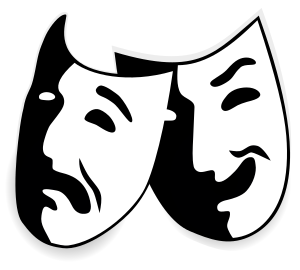
Bipolar disorder

Bipolar disorder, previously known as manic depression, is a mental disorder that causes periods of depression and periods of abnormally elevated mood. The elevated mood is significant and is known as mania, or hypomania if less severe and symptoms of psychosis are absent. During mania, an individual behaves or feels abnormally energetic, happy, or irritable. Individuals often make poorly thought out decisions with little regard to the consequences. The need for sleep is usually reduced during manic phases. During periods of depression, there may be crying, a negative outlook on life, and poor eye contact with others. The risk of suicide among those with the illness is high at greater than 6 percent over 20 years, while self-harm occurs in 30–40 percent. Other mental health issues such as anxiety disorders and substance use disorder are commonly associated with bipolar disorder. The causes are not clearly understood, but both environmental and genetic factors play a role. Many genes of small effect contribute to risk. Environmental risk factors include a history of childhood abuse and long-term stress. About 85% of the risk is attributed to genetics. The condition is classified as bipolar I disorder if there has been at least one manic episode, with or without depressive episodes, and as bipolar II disorder if there has been at least one hypomanic episode (but no full manic episodes) and one major depressive episode. In those with less severe symptoms of a prolonged duration, the condition cyclothymic disorder may be diagnosed. If the symptoms are due to drugs or medical problems, it is classified separately. Other conditions that may present similarly include attention deficit hyperactivity disorder, personality disorders, schizophrenia and substance use disorder as well as a number of medical conditions. Medical testing is not required for a diagnosis, though blood tests or medical imaging can be done to rule out other problems. Bipolar disorder is treated with medications, such as mood stabilizers and antipsychotics, as well as with psychotherapy. Mood stabilizers may improve mood disturbances, and include lithium and certain anticonvulsants such as valproate and carbemazepine. Involuntary treatment in a hospital may be needed if a person is a risk to themselves or others but refuses treatment. Severe behavioral problems, such as agitation or combativeness, may be managed with short-term antipsychotics or benzodiazepines. In periods of mania, it is recommended that antidepressants be stopped. If antidepressants are used for periods of depression, they should be used with a mood stabilizer. Electroconvulsive therapy (ECT), while not very well studied, may be tried for those who do not respond to other treatments. If treatments are stopped, it is recommended that this be done slowly. Many individuals have financial, social or work-related problems due to the illness. These difficulties occur a quarter to a third of the time, on average. Due to lifestyle choices and the side effects of medications, the risk of death from natural causes such as heart disease in people with bipolar is twice that of the general population. Bipolar disorder affects approximately 1% of the global population. In the United States, about 3% are estimated to be affected at some point in their life; rates appear to be similar in females and males. The most common age at which symptoms begin is 25. The economic cost of the disorder has been estimated at $45 billion for the United States in 1991. A large proportion of this was related to a higher number of missed work days, estimated at 50 per year. People with bipolar disorder often face problems with social stigma. Both mania and depression are characterized by disruptions in normal mood, psychomotor activity, circadian rhythm, and cognition. Mania can present with varying levels of mood disturbance, ranging from euphoria that is associated with 'classic mania' to dysphoria and irritability. The core symptom of mania involves an increase in energy of psychomotor activity. Mania can also present with increased self-esteem or grandiosity, rapid speech, the subjective feeling of rapid thoughts, disinhibited social behavior, or impulsivity. Mania is distinguished from hypomania by length, as hypomania requires four consecutive days, and mania requires more than a week. Unlike mania, hypomania is not always associated with impaired functioning. The biological mechanisms responsible for switching from a manic or hypomanic episode to a depressive episode, or vice versa, remain poorly understood. Mania is a distinct period of at least one week of elevated or irritable mood, which can range from euphoria to delirium, and those experiencing hypomania or mania generally exhibit several of the following behaviors: speaking in a rapid, uninterruptible manner, decreased need for sleep, short attention span, racing thoughts, increased goal-oriented activities, agitation, or exhibition of behaviors characterized as impulsive or high-risk, such as hypersexuality or excessive spending. To meet the definition for a manic episode, these behaviors must impair the individual's ability to socialize or work. If untreated, a manic episode usually lasts three to six months. Manic individuals often have a history of substance abuse developed over years as a form of 'self-medication'. At the most extreme, a person in a full-blown manic state can experience psychosis: a break with reality, a state in which thinking is affected along with mood. They may feel unstoppable, or as if they have been 'chosen' and are on a 'special mission', or have other grandiose or delusional ideas. This may lead to violent behavior and, sometimes, hospitalization in an inpatient psychiatric hospital. The severity of manic symptoms can be measured by rating scales such as the Young Mania Rating Scale, though questions remain about the reliability of these scales.
